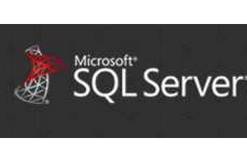|
September 2013 SQL Server Pro Magazine is already addressing the question, What’s in the next version of SQL Server? It also looks at questions regarding SQL Server 2014’s In-Memory OLTP Engine.
In this overview of the online subscription-based monthly magazine, the items in bold below correspond to the name of the article in the current issue.
The SQL Server 2014 Community Technology Preview 1 has been available since June but if you've not already looked at it Microsoft's Eron Kelly Discusses SQL Server 2014 with Michel Otey.
The highlights include:
- In-memory OLTP Engine. This technology is expected to give a 5x to 20x performance improvement. The associated Analysis, Migrate, and Report (ARM) tool will help you determine which tables should go into memory
- New Azure Integration Options. These include backup/restore and AlwaysOn Availability Groups
- Expected availability is early 2014
This was my favourite article, with some very useful links. The promise of improved performance for very little cost is just too enticing.

There’s an interesting FAQs About SQL Server 2014’s In-Memory OLTP Engine. Formerly code-named Hekaton, this is the most prominent aspect of the forthcoming SQL Server 2014 release. The article discusses the immediate questions you’re sure to want the answer to, including where to find more information, expected performance gains (5x to 20x are likely) and how it works (tables are moved into memory).
Itzik Ben-Gan begins a series of articles relating to the manipulation of intervals involving the calculation of various counts. The series starts with a 17-page article entitled Intervals and Counts. Part 1, which covers how to identify discrete intervals and counts of overlapping source intervals. Two solutions are given, these cover PIVOT, LEAD, and SUM Window Aggregates, and LEAD and ROW_NUMBER Window Aggregates.
Even if you’re not specifically interested in the underlying subject matter, I suggest you look over these articles, the author often gives some very useful off-topic hints, tips, and patterns along the way.
In Troubleshooting Transactional Replication, various useful tools are described. The primary tool being Replication Monitor, its use and content are outlined. Next, Trace Tokens are described as a means of measuring the flow of data between the publisher and subscriber. The use of Alerts for common tasks, such are stopped agents, unchecked growth, and measuring latency is explained. Lastly, three of the most common replication problems and their solutions are given. If you’re new to transactional replication this article is a great starting point.
There’s a gentle step-by-step walkthrough Exploring Visual Studio 2010’s Database Tools. This article discusses creating database projects, stored procedures, and running SQL queries. Perhaps most interesting is the ability to compare databases for differences in schemas and data – perhaps these can be used in place of the expensive third party equivalents!
Michael K. Campbell gives a clear and concise overview of Configuring and Troubleshooting Database Mail for SQL Server. Additionally there are nice tips on how to easily send a test email to confirm the setup, and checking the database mail log for any errors.
The corrupting series continues with SQL Server Database Corruption, Part 2: Simulating Corruption. Here a non-clustered index in corrupted, on a test database, using the free hex editor HxD. It’s certainly worthwhile playing with corruption in a safe test environment, rather than the panic of a production problem. And it will make you appreciate the importance of backups or rather verified backups!
Cloud integration is increasingly being highlighted in forthcoming products e.g. SQL Server2014 backup option to Windows Azure. However, currently much of this cloud movement is being ignored by SQL Server professionals. In SQL Server Cloud Choices Michael Otey suggests part of problem is because there are too many choices (public, privet, hybrid clouds). Otey outlines the various choices, again. I notice there have been a few similar editorials recently around the cloud and these various choices, I wonder if the space could be better used…
Overall this issue shows an increasing trend towards SQL Server 2014. This is to be expected, with all the hype and excitement centred on the latest product version. While this is interesting, it should be remembered that, as revealed recently by Paul Randal, most shops are currently using SQL Server 2005 and 2008!
Software Security Report Finds Third Party Code Most Problematic
12/03/2025
The latest edition of Veracode's annual State of Software Security report has identified that 80% of the applications tested over the last year have at least one security flaw, and just u [ ... ]
|
HuggingFace AI Agents Course
11/03/2025
A free course on how Agents work by practically showing how to build your own using the latest libraries and tools. If you are bogged down by repetitive tasks, this course is certainly worth your [ ... ]
| | More News |
|


